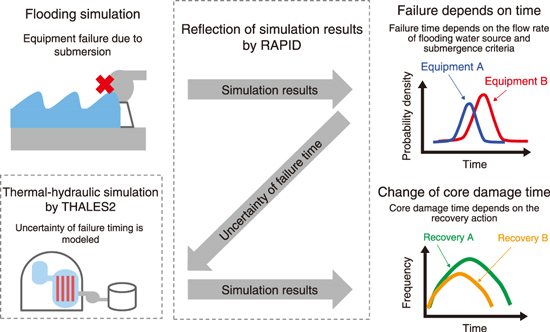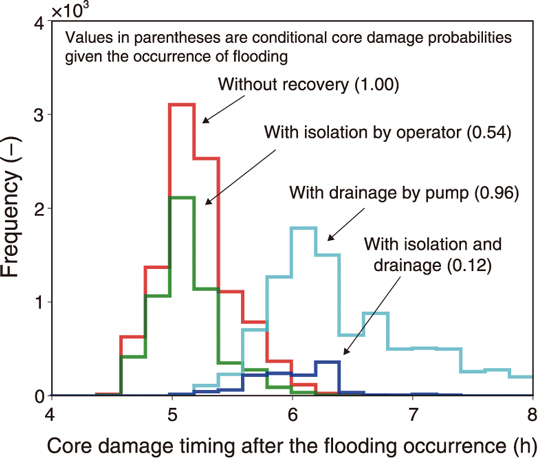
Fig.2-4 Reflecting uncertainty evaluated by flooding simulation to thermal-hydraulic simulation

Fig.2-5 Changes in core damage timing by recovery actions
Risk is an important safety related measure. The probabilistic risk assessment (PRA) has been used to evaluate the risk of nuclear reactors including external events such as earthquakes and tsunamis. This method utilizes tree-shaped diagrams to organize the effects of equipment failure. The obtained information (e.g., core damage frequency) can be used for various decision making situations to enhance safety. Japan Atomic Energy Agency (JAEA) is developing a dynamic PRA (DPRA), one of the advanced PRAs, and a computational tool named RAPID. DPRA links various simulations to the tree-shaped diagrams used in the conventional PRA. It can consider temporal effects like the failure timing which is difficult to manipulate in the conventional PRA. The DPRA of internal flooding has the advantage of allowing in-depth consideration of failure timing due to water propagation from ruptured pipes to adjacent rooms and their impact on the plant response.
DPRA of internal flooding at a turbine building in a pressurized water reactor was performed using RAPID. As shown in Fig.2-4, the results of flooding simulation were reflected on a thermal-hydraulics code of THALES2. For recovery actions, two were modeled; (1) isolation of flooding water sources and (2) drainage with pump. Core damage timing after the flooding occurrence and conditional core damage probabilities (CCDPs) were analyzed.
Fig.2-5 shows the changes of core damage timing when recovery actions are taken. Here, 10,000 trials of Monte Carlo simulation have been conducted. The isolation can effectively reduce frequency of core damage after five hours. This reduction is attributed to the late-phase submergence being avoided. The drainage can postpone core damage timing by delaying the submergence timing. If these recovery actions are applied simultaneously, their synergistic effects can drastically diminish the occurrence of core damage. The combination reduces the CCDP given the occurrence of flooding by around one order of magnitude. The analysis illustrates that DPRA enables a more detailed assessment by considering failure timing due to flooding.
As shown in the results, DPRA enables risk analysts to understand the risk profiles of facilities in a more detailed manner. This understanding is helpful for risk-informed decision making such as establishing more effective safety improvement measures. In the future, risk assessments against other external events will be performed to verify the effectiveness of various countermeasures.
This research was conducted using the Oakbridge-CX at the University of Tokyo, the ICE X and HPE SGI 8600 at JAEA.
(Kotaro Kubo)
<Previous: 2 Research on Nuclear Safety and Emergency Preparedness | Next: 2-2>